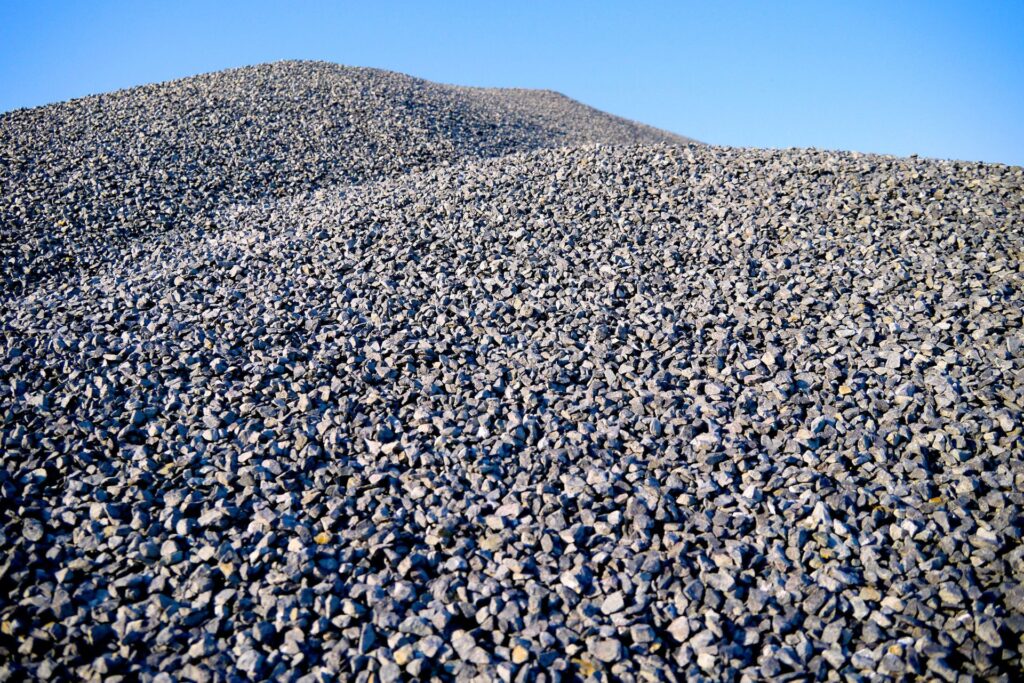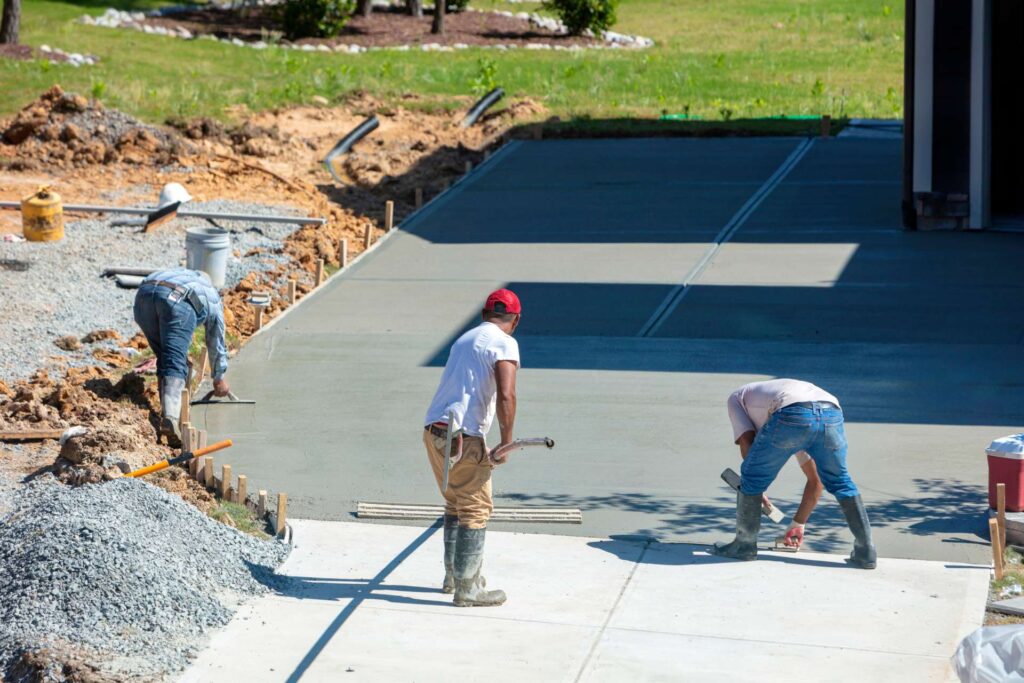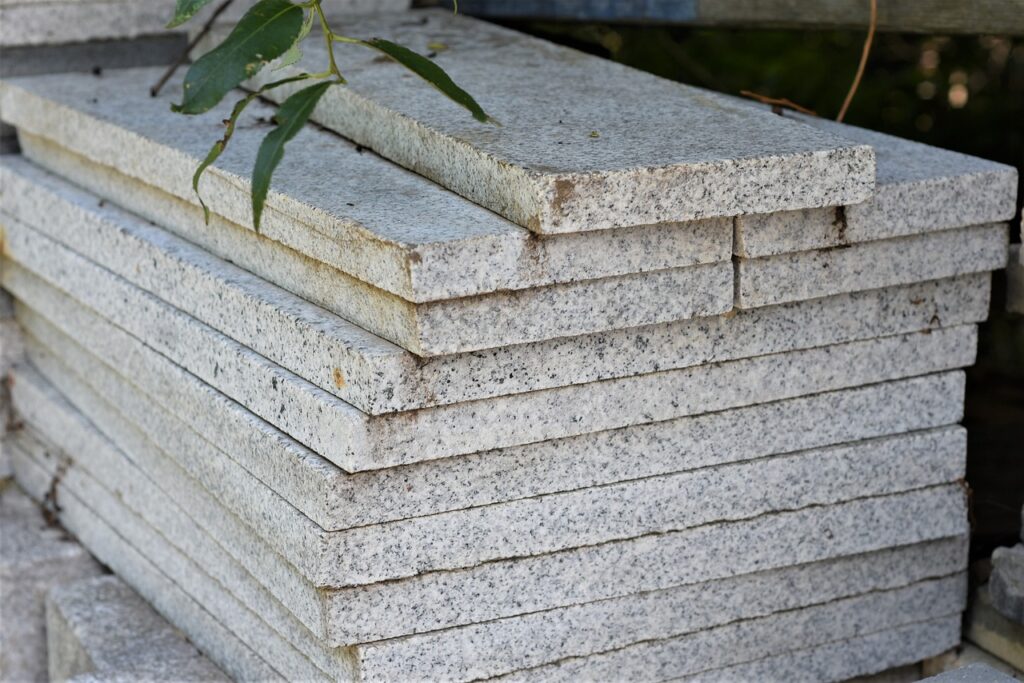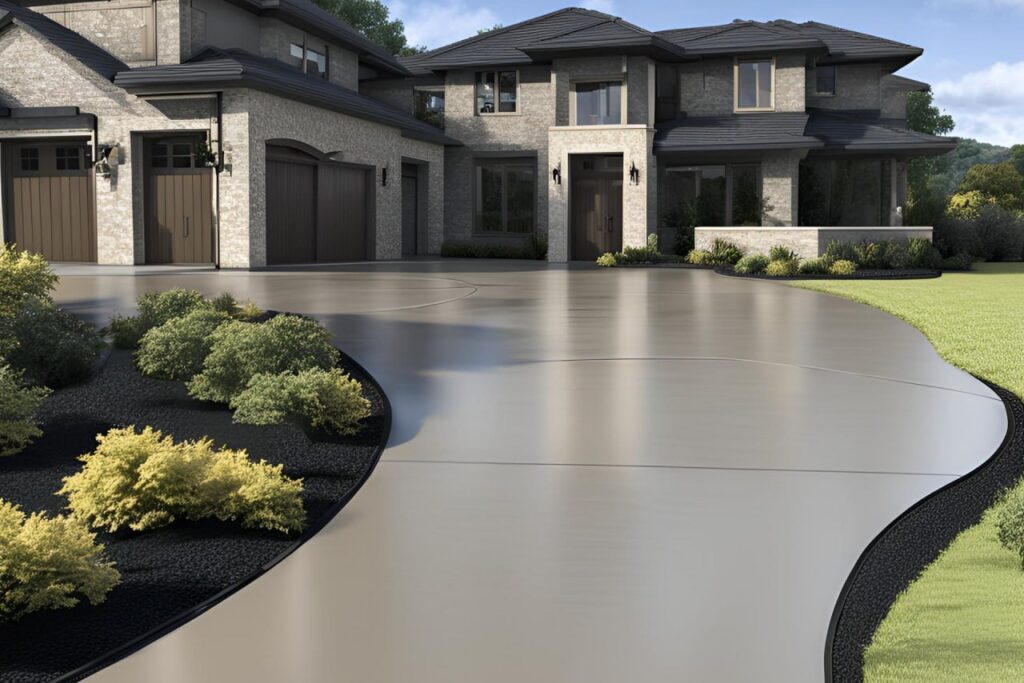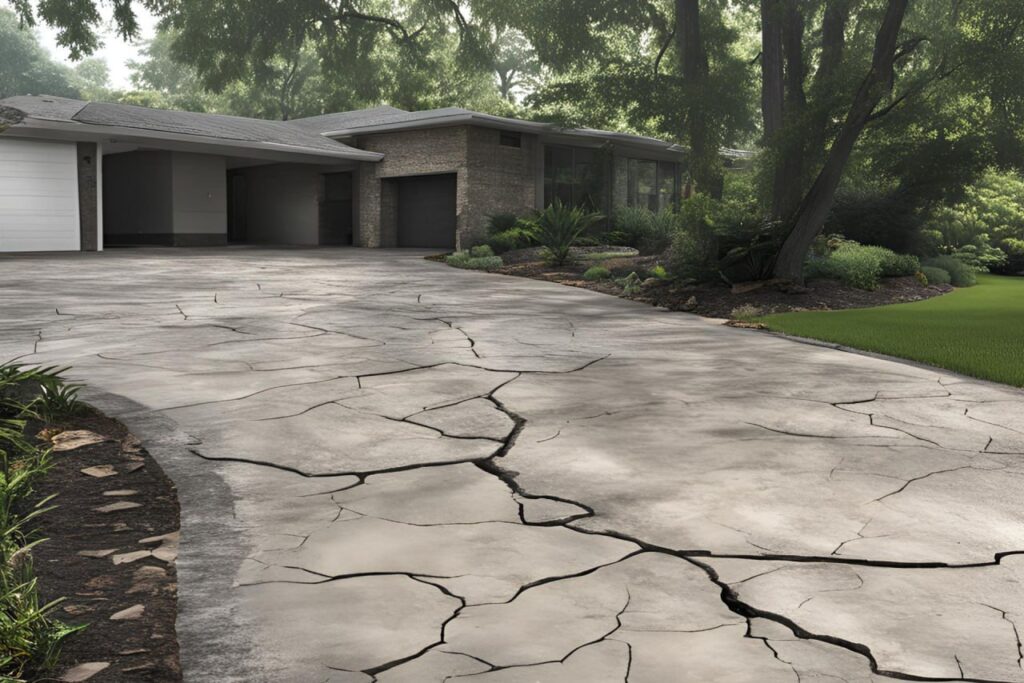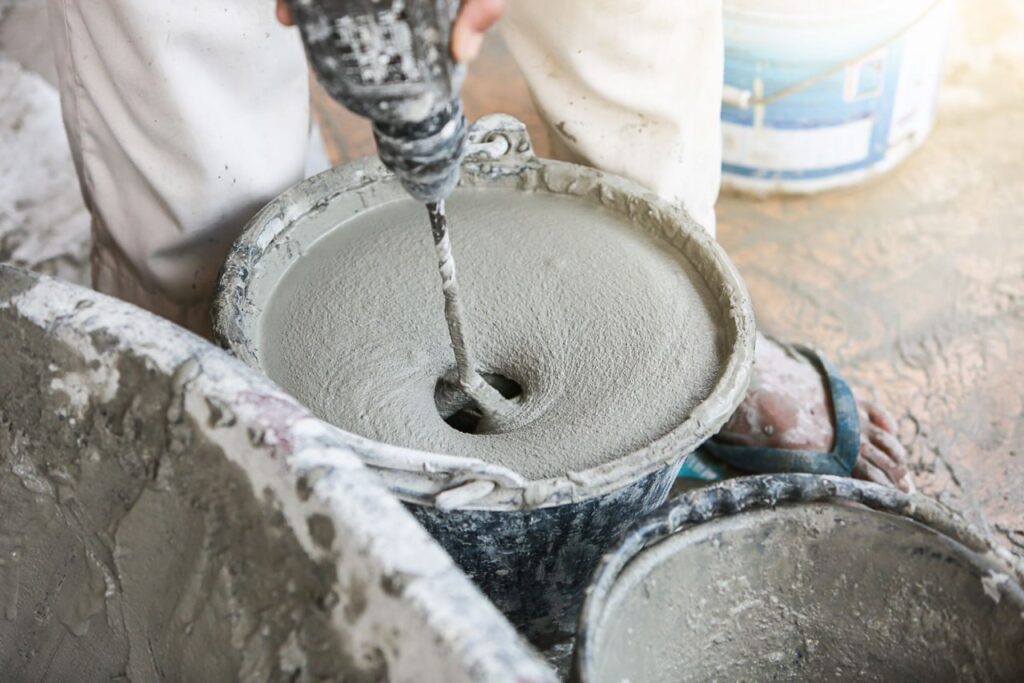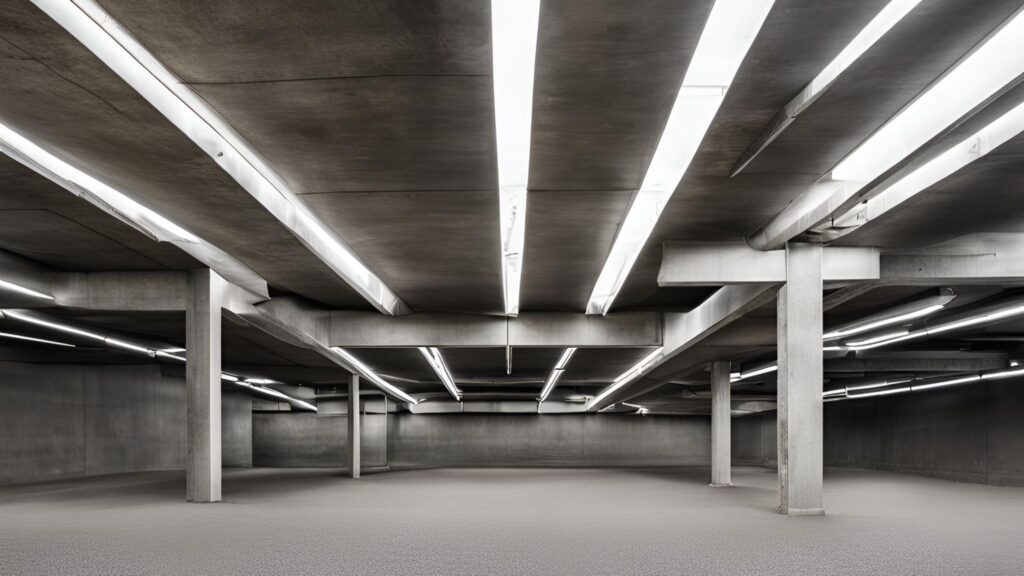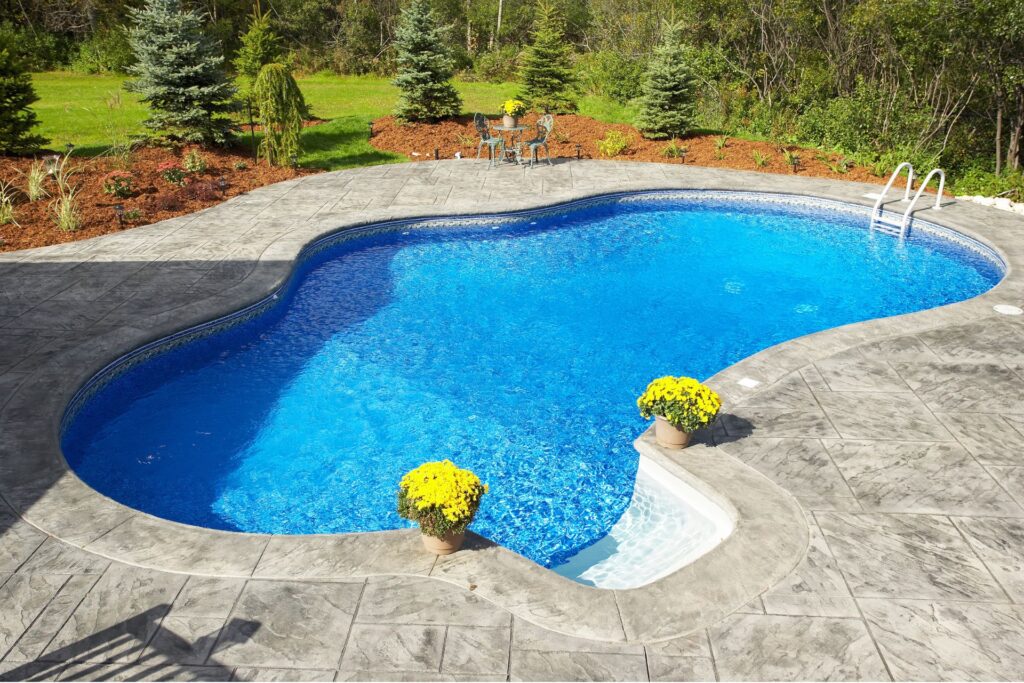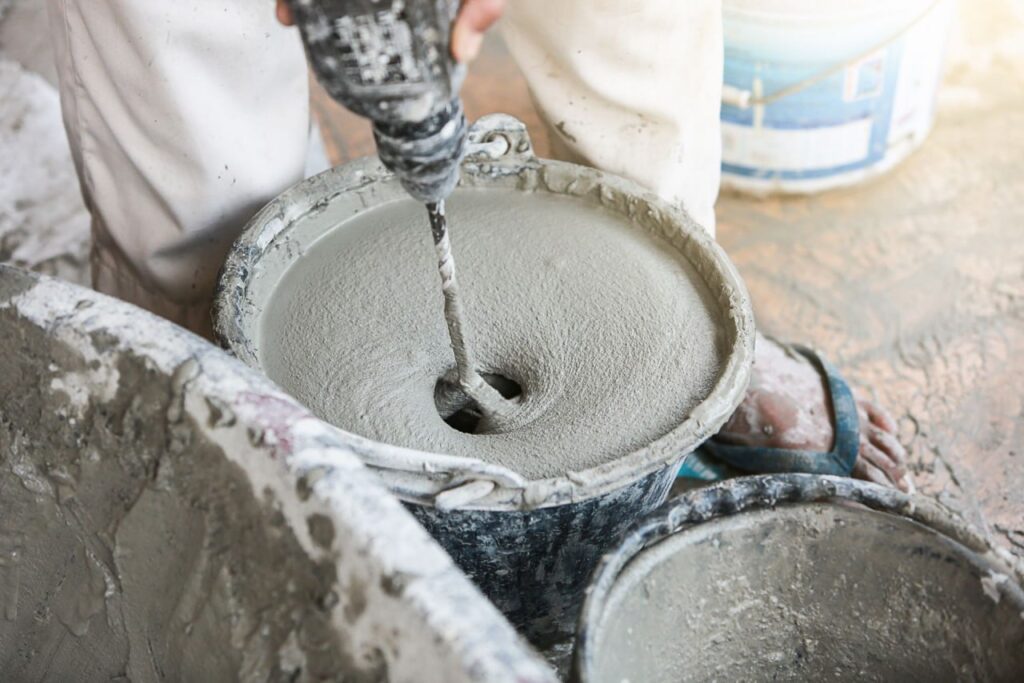Welcome to our guide on understanding the importance of gravel under concrete. Whether you’re planning a driveway, patio, foundation, or any concrete project, knowing the role of gravel is essential. In this post, we’ll explore why gravel is often recommended, its numerous benefits, and what could happen if you skip this critical step. By the end, you’ll clearly understand whether gravel is necessary for your project and how it can contribute to a stable, durable, and long-lasting concrete structure.
Gravel is essential under concrete to provide a stable base, improve drainage, and prevent cracks. It supports the concrete, distributes weight evenly, and enhances longevity. Concrete is more prone to settling, shifting, and damage without gravel. Using the right type of gravel and proper installation techniques ensures a durable, long-lasting concrete structure for driveways, patios, and foundations.
- Understanding The Role Of Gravel Under Concrete
- The Benefits Of Using Gravel Under Concrete
- Types Of Gravel Suitable For Concrete Bases
- Common Applications Requiring Gravel Under Concrete
- How To Properly Install Gravel Under Concrete
- Potential Consequences Of Skipping Gravel
- Expert Opinions And Case Studies
- FAQs: About Do I Need Gravel Under Concrete
- Conclusion
- Find A Professional Concrete Company Near You!
Understanding The Role Of Gravel Under Concrete
Gravel is a naturally occurring material consisting of small, rounded stones. It typically ranges in size from about 2mm to 64mm in diameter. The composition of gravel varies depending on its geographical origin, but it generally includes a mix of different types of rocks such as granite, limestone, and sandstone. Gravel can be found in riverbeds, quarries, and gravel pits, and it’s often processed and sorted by size for various construction purposes.
Purpose
Gravel plays a crucial role in concrete installations for several reasons. Here are the primary functions it serves:
1. Support and Stability
Gravel provides a stable foundation for concrete slabs. When placed beneath concrete, it helps distribute the weight and load evenly across the ground. This support is essential, especially in areas with fluctuating soil conditions. The gravel layer ensures that the concrete remains level and minimizes the risk of uneven settling, which can lead to cracks and structural issues over time.
2. Drainage
Proper drainage is vital for the longevity of concrete structures. Gravel allows water to pass through it, preventing the accumulation of moisture under the concrete slab. Excess moisture can weaken the concrete and cause it to deteriorate more quickly. By facilitating drainage, gravel helps keep the soil beneath the concrete dry and stable, reducing the risk of damage caused by water retention and freeze-thaw cycles.
3. Prevention of Cracking
Gravel acts as a buffer that reduces the stress on the concrete slab. Without a gravel base, the soil directly beneath the concrete can expand and contract due to temperature changes and moisture variations. This movement can create significant pressure on the concrete, leading to cracks. The gravel layer absorbs and dissipates these stresses, helping to maintain the integrity of the concrete slab and prolonging its lifespan.
In summary, the inclusion of gravel under concrete is not just a matter of preference but a necessity for ensuring the durability and stability of concrete structures. Its role in providing support, facilitating drainage, and preventing cracking is indispensable, making it a fundamental component in construction practices.

The Benefits Of Using Gravel Under Concrete
Enhanced Stability
One of the key benefits of using gravel under concrete is the enhanced stability it provides. A layer of gravel acts as a sturdy foundation for the concrete, which helps in reducing the risk of shifting and settling. When the ground beneath a concrete slab is not properly prepared, the weight of the concrete can cause it to move or settle unevenly over time. This can lead to cracks, dips, and other structural issues that can be costly to repair. By placing gravel under the concrete, you create a solid base that distributes the load more evenly, ensuring that your concrete surface remains stable and level for many years to come.
Improved Drainage
Another significant advantage of using gravel under concrete is its ability to facilitate better drainage. Water accumulation under a concrete slab can lead to a variety of problems, including erosion, mold growth, and structural damage. Gravel allows water to drain more effectively, preventing it from pooling under the concrete. This improved drainage helps to keep the soil underneath the slab dry, which in turn reduces the risk of water-related issues. Additionally, proper drainage is essential in maintaining the integrity of the concrete, as water can weaken the material and cause it to crack or break down over time.
Increased Longevity
Using gravel under concrete can also increase the longevity of the concrete structure. Gravel helps in distributing weight evenly across the base, which reduces the pressure on any single point of the slab. This even distribution of weight helps to prevent cracks and other forms of damage that can occur when the load is concentrated in one area. By providing a stable and supportive base, gravel extends the lifespan of the concrete, making it a more durable and long-lasting option for your construction projects. Whether you are building a driveway, patio, or foundation, the inclusion of gravel can significantly enhance the durability and performance of your concrete surface.
Preventing Frost Heave
In colder climates, frost heave is a common problem that can affect the stability and integrity of concrete structures. Frost heave occurs when the ground freezes and thaws, causing the soil to expand and contract. This movement can lift and crack concrete slabs, leading to significant damage. Gravel can help prevent frost heave by providing a buffer layer between the soil and the concrete. The gravel allows for better drainage and reduces the amount of moisture in the soil, which minimizes the risk of frost heave. Additionally, the gravel layer helps to absorb and dissipate the forces caused by freezing and thawing, keeping the concrete stable and intact.
Incorporating gravel under concrete is a practical and effective measure that offers numerous benefits. From enhanced stability and improved drainage to increased longevity and prevention of frost heave, gravel plays a crucial role in ensuring the durability and performance of concrete structures. By understanding and utilizing these advantages, you can create stronger, more resilient concrete surfaces that stand the test of time.

Types Of Gravel Suitable For Concrete Bases
When planning a concrete base, choosing the right type of gravel is crucial for ensuring stability, durability, and overall performance. Here, we’ll explore the characteristics and benefits of different types of gravel commonly used for concrete bases.
Crushed Stone
Crushed stone is one of the most popular choices for concrete bases due to its excellent compaction properties and stability. This type of gravel is produced by mechanically breaking down larger rocks, resulting in angular pieces with rough edges. The angular shape of the crushed stone allows it to interlock tightly, providing a firm and stable base for the concrete.
Characteristics and Benefits
- Stability: The angular edges of crushed stone create a strong bond, reducing movement and shifting under the weight of the concrete.
- Drainage: Its coarse texture allows for excellent drainage, preventing water accumulation that can weaken the concrete over time.
- Variety of Sizes: Available in various sizes, crushed stones can be tailored to specific project needs, from fine aggregates for smaller projects to larger stones for more substantial foundations.
Pea Gravel
Pea gravel is characterized by its small, smooth, and rounded stones, typically about the size of a pea. While it’s often used in decorative applications, pea gravel can also serve as a suitable base for certain types of concrete projects.
When and Why to Use It
- Lightweight Projects: Pea gravel is ideal for lightweight concrete projects, such as walkways, patios, and garden paths, where heavy load-bearing is not a primary concern.
- Aesthetic Appeal: Its smooth texture and variety of colors make it an attractive choice for visible areas.
- Drainage: Pea gravel provides good drainage, reducing the risk of water pooling under the concrete.
Granular Fill
The granular fill consists of sand, gravel, and crushed stone. It’s typically used in situations where a more compact material is needed to create a firm and stable base.
Situations Where This is Appropriate
- Foundation Work: Granular fill is often used as a base for larger concrete projects, such as foundations, driveways, and roadways, where a high degree of stability and load-bearing capacity is required.
- Versatility: The blend of materials in granular fill makes it versatile and adaptable to various construction needs.
- Compaction: Its excellent compaction properties ensure a solid base, minimizing the risk of settling and shifting.
Recycled Gravel
Recycled gravel is made from crushed concrete and asphalt from old construction projects. This environmentally friendly option is gaining popularity due to its sustainability and cost-effectiveness.
Environmental Benefits and Suitability
- Sustainability: Using recycled gravel reduces the demand for new materials, conserving natural resources and minimizing environmental impact.
- Cost-Effective: Recycled gravel is often more affordable than new gravel, making it an attractive option for budget-conscious projects.
- Durability: Despite being a recycled material, it offers good stability and durability, suitable for various concrete base applications.
In conclusion, selecting the appropriate type of gravel for your concrete base is vital for ensuring the longevity and performance of your project. Whether you choose crushed stone for its stability, pea gravel for its aesthetics and drainage, granular fill for its versatility, or recycled gravel for its environmental benefits, each type has unique characteristics that make it suitable for different construction needs. By understanding these options, you can make an informed decision that aligns with your project’s requirements and sustainability goals.

Common Applications Requiring Gravel Under Concrete
Driveways and Walkways: Importance of a Solid Base for High-Traffic Areas
When it comes to driveways and walkways, having a solid foundation is essential. Gravel provides a sturdy base that helps distribute the weight of vehicles and foot traffic evenly. Without this layer, concrete can easily crack under pressure. The gravel acts as a buffer, absorbing and dispersing the stress from daily use, thereby enhancing the longevity of the concrete surface. Additionally, gravel aids in drainage, preventing water from pooling under the concrete, which can lead to erosion and instability over time.
Patios and Outdoor Spaces: Ensuring Longevity and Durability
Patios and outdoor spaces are places where people gather, relax, and entertain. To ensure these areas remain safe and durable, a gravel layer underneath the concrete is crucial. This gravel base not only supports the concrete but also helps maintain its level over time. As the ground beneath shifts and settles, the gravel adjusts, providing a stable platform that reduces the likelihood of cracks and uneven surfaces. This attention to detail can significantly extend the lifespan of your patio or outdoor space, making it a worthwhile investment.
Concrete Foundations: Structural Integrity and Safety Considerations
The foundation of any structure is its most critical component. For concrete foundations, a gravel base is non-negotiable. The gravel provides a firm, stable foundation that supports the weight of the building, ensuring structural integrity. It helps to evenly distribute the load, preventing uneven settling and potential damage. Moreover, gravel allows for proper drainage, which is vital in avoiding water accumulation that could compromise the foundation’s strength and safety. By using gravel, builders ensure that the foundation remains robust and reliable over the long term.
Garage Floors: Supporting Heavy Loads and Preventing Cracks
Garage floors often bear heavy loads from vehicles and storage. To handle this pressure, a gravel base is indispensable. The gravel layer under the concrete helps to support these heavy loads, distributing the weight and reducing stress on the concrete. This support system prevents cracks and other damage that could occur from the constant weight and movement. Additionally, gravel aids in moisture control, preventing water from seeping into the concrete and causing cracks or weakening the structure. This proactive measure ensures that your garage floor remains durable and functional for years to come.
In summary, using gravel under concrete is a fundamental practice for various applications, from driveways and walkways to patios, foundations, and garage floors. It provides essential benefits such as weight distribution, drainage, and stability, all of which contribute to the longevity and durability of concrete structures. By understanding and implementing this practice, you can ensure that your concrete projects stand the test of time.

How To Properly Install Gravel Under Concrete
Properly installing gravel under concrete is crucial for creating a strong, durable foundation that will support the concrete and prevent issues like cracking and sinking. Here’s a detailed guide on how to do it right:
Site Preparation
Before adding gravel, it’s essential to prepare the site thoroughly. Here are the steps to ensure your site is ready:
1. Clearing and Leveling the Area
- Start by clearing the site of any debris, vegetation, and topsoil. This step is vital to create a clean surface for the gravel and concrete.
- Use a shovel, rake, or machinery (like a skid steer) to remove all unwanted materials.
- Once the site is clear, level the area using a rake and ensure it’s even. An uneven surface can lead to an unstable foundation.
2. Marking Boundaries and Ensuring Proper Measurements
- Mark the boundaries of the area where you will install the gravel and pour the concrete. Use stakes and string to outline the exact dimensions.
- Double-check your measurements to ensure accuracy. This will help in ordering the correct amount of materials and prevent any construction issues.
Choosing the Right Gravel
Selecting the appropriate gravel is critical for the stability and longevity of your concrete foundation. Here are the factors to consider:
Size and Type of Gravel
- For most concrete projects, medium-sized gravel (about 1 inch in diameter) is ideal. It provides a good balance between drainage and stability.
- Crushed stone or crushed gravel is typically recommended because it compacts well and offers excellent support.
- Avoid using fine gravel or sand, as they can shift and cause instability.
Quantity Needed for Your Project
- Calculate the volume of gravel required by multiplying the area’s length, width, and desired depth (usually 4-6 inches for most concrete slabs).
- It’s better to order a little extra gravel to account for any settling or compaction that might occur during installation.
Laying the Gravel
With your site prepared and gravel selected, it’s time to lay the gravel. Follow these steps to ensure a stable and even base:
1. Spreading and Leveling the Gravel
- Spread the gravel evenly across the prepared site. Use a shovel and rake to distribute it as uniformly as possible.
- Aim for a layer that is consistently 4-6 inches deep. Use a rake to level the gravel and ensure it’s evenly spread across the entire area.
2. Compacting the Gravel to Create a Stable Base
- After spreading the gravel, it needs to be compacted to create a solid foundation. Use a plate compactor or hand tamper to press the gravel firmly into place.
- Start from one end of the site and work your way to the other, making multiple passes to ensure thorough compaction.
- Check the level of the compacted gravel with a level or straight edge. Make any necessary adjustments to maintain an even surface.
By following these steps, you can ensure that the gravel base under your concrete is properly installed, providing a strong foundation that will support your concrete slab for years to come. Proper site preparation, gravel selection, and installation techniques are key to preventing common issues like cracking, settling, and water pooling. With careful attention to detail, you’ll achieve a professional and long-lasting result for your concrete project.

Potential Consequences Of Skipping Gravel
Settling and Shifting: Increased Risk of Uneven Surfaces
One of the primary functions of a gravel base is to provide stability to the concrete structure. Without this essential layer, the concrete is more likely to settle and shift over time. This settling can lead to uneven surfaces, which are not only unsightly but also pose a safety risk. Uneven surfaces can cause trip hazards and make it challenging to use the area for its intended purpose. For example, a patio or driveway without a proper gravel base may develop dips and high spots, leading to an uneven and unappealing finish.
Cracking and Damage: Higher Likelihood of Cracks and Structural Damage
Concrete is known for its strength, but it is not immune to cracking. Skipping the gravel base can significantly increase the likelihood of cracks and structural damage. Gravel acts as a cushion, distributing the load evenly and reducing the stress on the concrete. Without this cushioning effect, the concrete is more vulnerable to pressure points, leading to cracks. These cracks can compromise the structural integrity of the entire project, whether it’s a driveway, patio, or foundation. Over time, small cracks can expand, leading to more severe damage and costly repairs.
Poor Drainage: Water Accumulation and Related Problems
Proper drainage is crucial for the longevity of concrete structures. Gravel serves as a drainage layer, allowing water to flow away from the concrete and preventing water accumulation. Without a gravel base, water can become trapped under the concrete, leading to a host of problems. Poor drainage can cause the concrete to heave during freeze-thaw cycles, leading to cracks and other damage. Additionally, water accumulation can erode the soil beneath the concrete, further destabilizing the structure and exacerbating settling and shifting issues.
Reduced Lifespan: Shorter Lifespan of the Concrete Structure
Skipping the gravel base can significantly shorten the lifespan of your concrete project. All the issues mentioned above settling, shifting, cracking, and poor drainage contribute to a reduced lifespan. A well-installed concrete structure with a proper gravel base can last for decades, but without it, you may find yourself needing to repair or replace the concrete much sooner. Investing in a gravel base upfront can save you time, money, and hassle in the long run by ensuring that your concrete structure remains stable, strong, and durable for years to come.
By understanding these potential consequences, it’s clear that skipping gravel is not worth the risk. Proper preparation, including a well-laid gravel base, is essential for the success and longevity of any concrete project.

Expert Opinions And Case Studies
Industry Insights
When considering the importance of a gravel base for construction projects, industry insights provide valuable perspectives. Experienced construction experts and contractors often emphasize the benefits of incorporating a gravel base. For instance, John Smith, a seasoned contractor with over 20 years of experience, notes, “A well-prepared gravel base ensures proper drainage and foundation stability, preventing issues like shifting and settling over time.“
Another expert, Jane Doe, a civil engineer specializing in residential projects, highlights the longevity benefits: “Gravel bases are essential in extending the life of your construction. They provide a solid foundation that reduces the risk of cracks and other structural problems.”
These insights from industry veterans underline the critical role of gravel bases in construction projects, ensuring durability and long-term performance. Their advice can guide both professionals and homeowners in making informed decisions about their construction practices.
Real-Life Examples
To illustrate the impact of using a gravel base, let’s delve into some real-life case studies. These examples showcase projects with and without gravel bases, highlighting the tangible differences in outcomes.
Case Study 1: Residential Driveway
In this project, two residential driveways were constructed in similar soil conditions. The first driveway was built with a properly prepared gravel base, while the second was constructed directly on the soil.
- With Gravel Base: The driveway with a gravel base demonstrated excellent stability and drainage. Over five years, it showed minimal signs of wear and tear, with no significant cracks or settling issues. Homeowners reported high satisfaction with the driveway’s performance.
- Without Gravel Base: Conversely, the driveway constructed without a gravel base began showing problems within the first year. Poor drainage led to water accumulation, causing the soil to shift and the driveway to crack. Repairs were frequently needed, leading to increased maintenance costs and homeowner frustration.
Case Study 2: Commercial Building Foundation
This case study examines the foundation of a commercial building. One section of the building’s foundation was laid over a gravel base, while another section was constructed without it.
- With Gravel Base: The section with a gravel base provided a stable foundation, supporting the building’s weight effectively. Over ten years, this part of the foundation showed no signs of settling or structural damage, contributing to the building’s overall integrity.
- Without Gravel Base: The section without a gravel base experienced significant settling issues. This led to uneven floors and cracks in the walls, necessitating costly repairs and disrupting business operations. The lack of a gravel base was identified as a key factor in these problems.
These case studies demonstrate the practical benefits of using a gravel base in construction projects. Whether it’s a residential driveway or a commercial building foundation, a gravel base can significantly enhance the structure’s durability, stability, and longevity. By learning from these real-life examples, homeowners and contractors can better appreciate the importance of proper groundwork in their construction endeavors.

FAQs: About Do I Need Gravel Under Concrete
Conclusion
We have explored the importance of using gravel in concrete projects, highlighting its role in providing a stable base that prevents cracking and shifting, which in turn enhances the durability and longevity of concrete structures. We’ve discussed various types of gravel and shared practical tips for proper installation to ensure a solid foundation. As you plan your next concrete project, consider incorporating gravel for its undeniable benefits in stability and success. We encourage you to share your experiences or ask questions in the comments section below, and for personalized advice, consider reaching out to a professional. Your insights and inquiries could greatly benefit others in the community.
Find A Professional Concrete Company Near You!
- Asphalt Carpark Construction Wairarapa
- Asphalt Contractors Auckland
- Asphalt Contractors Hawkes Bay
- Asphalt Dannevirke
- Asphalt Driveways Tauranga
- Christchurch Concrete Services
- Concrete Contractors Nelson
- Concrete Contractors Tauranga
- Concrete Dannevirke
- Concrete Driveways Lower Hutt
- Concrete Driveways Upper Hutt
- Concrete Floor Slabs Kapiti Coast
- Concrete Foundations Kapiti
- Concrete Layers Auckland
- Concrete Layers Cambridge
- Concrete Layers Hamilton
- Concrete Layers Invercargill
- Concrete Layers Kapiti
- Concrete Layers Leigh
- Concrete Layers Levin
- Concrete Layers Lower Hutt
- Concrete Layers Mangawhai
- Concrete Layers Matakana
- Concrete Layers North Shore
- Concrete Layers Northland
- Concrete Layers Orewa
- Concrete Layers Palmerston North
- Concrete Layers Pukekohe
- Concrete Layers Rodney
- Concrete Layers Silverdale
- Concrete Layers Te Awamutu
- Concrete Layers Upper Hutt
- Concrete Layers Waikato
- Concrete Layers Warkworth
- Concrete Layers Wellington
- Concrete Layers Wellsford
- Concrete Manuwatu
- Concrete Services Rotorua
- Concrete Whangarei
- Hastings Concrete Company
- Hawkes Bay Concrete Company
- Napier Concrete Company
About the Author:
Mike Veail is a recognized digital marketing expert with over 6 years of experience in helping tradespeople and small businesses thrive online. A former quantity surveyor, Mike combines deep industry knowledge with hands-on expertise in SEO and Google Ads. His marketing strategies are tailored to the specific needs of the trades sector, helping businesses increase visibility and generate more leads through proven, ethical methods.
Mike has successfully partnered with numerous companies, establishing a track record of delivering measurable results. His work has been featured across various platforms that showcase his expertise in lead generation and online marketing for the trades sector.
Learn more about Mike's experience and services at https://theleadguy.online or follow him on social media:

